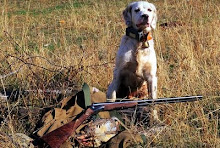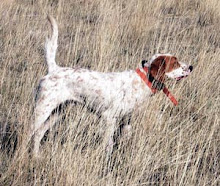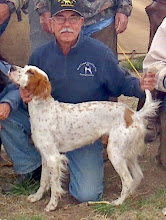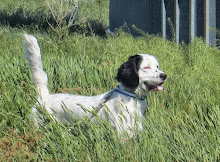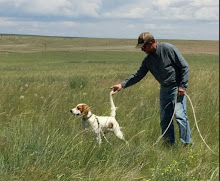
A hunter can try out field trials in walking stakes - informal, inexpensive and a lot of fun...
It is probable that the first field trials were the result of a bet between two or more hunters on who had the best dog. It seems almost inevitable that such a thing would happen. While hunting is not (or at least shouldn't be) a competitive sport, it is certain that field trialing is competitive. Even those who 'just want to run my dog' like the recognition that comes with winning.
But sportsmanship is alive and well... field trialers it seems are always ready to help a fellow in need with loan of a horse, a loan of equipment, help in scouting or looking for a a lost dog. And field trialers know that if they do not come to trials and run their dogs, or help by marshalling, or judging or just driving the dogs truck, there would be no field trials.
Hunters often say that field trials 'are not like hunting'. I agree, further, they should not be like hunting. They are tests for dogs, not hunters. But field trialers and hunters share the goal for producing and running good bird dogs, so the ambivalence (or even hostility) that some hunters have towards field trials is puzzling to me. Being a hunter and a field trialer both, I enjoy a good bird dog whether it is out by myself on a hunt or watching a polished performer laying down a solid heat in a trial.
I would encourage all who have not been to a trial to at least go and have a look, you'll likely find a bunch of nice folks who share your interest and welcome your questions. You might like it!












